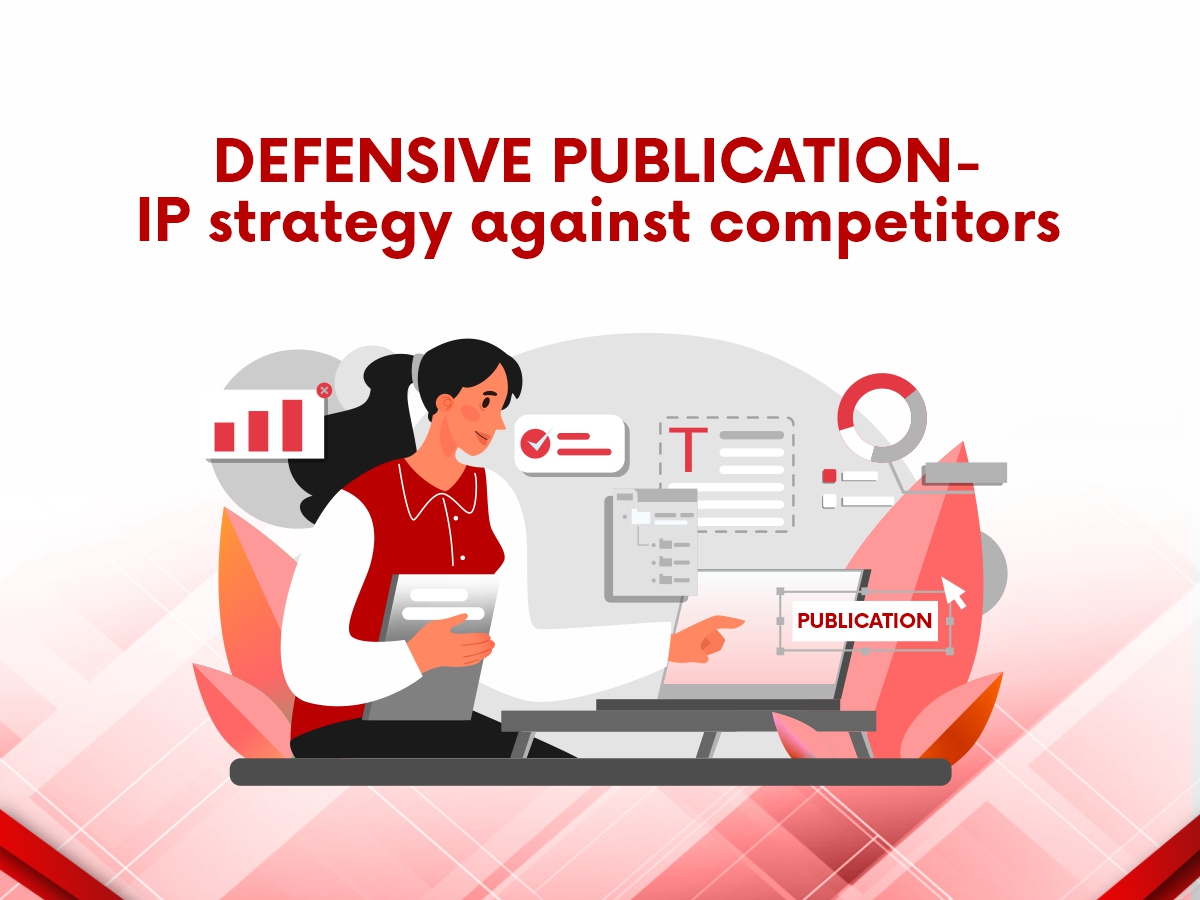
Close


For Growth and Expansion, Companies rely on new concepts & ideas to succeed. However, not all ideas are worth the financial investment to get a patent. Innovations essential to an organization’s goals are worthy of such financial commitment. That’s why companies must act rationally to invest resources.
It is also important to avoid competitors from filing patents for the same. That’s why by putting innovations in the public domain, you can uncover them as prior art. Know more about Defensive Publication in this blog on “Defensive Publication – IP strategy against competitors”.
Also Known as Disclosure Publishing, Defensive Publication is the practice of placing innovation into the public domain. Organisations provide partial or full disclosure of an enabling (description or drawing) of a product, apparatus or method with a motive to prevent competitors from filing and getting a patent.
It allows them some degree of “Freedom to Operate”. Defensive Publication works best to defeat the novelty of a patent application filed subsequently. It is in sharp contrast to a trade secret.
Patents and Defensive publications both have a significant position in IP Strategy. They both share similarities and differences. Also, they lower the possibility of lawsuits and safeguard your freedom to operate by informing the patent examiner about your technology specifics.
Minor Improvements in core technology, may not worth a patent. But, you don’t want your competitors to patent it. Defensive Publication can be smart move if planned well. You can cost effectively prevent rivals from stifling your innovation with their own patents using defensive publication as compared to patents.
Defensive Publication creates prior art quickly & inexpensively as compared to patents. Unlike Patents, there is no maintenance fees & legal action for Defensive Publication.
On strategic level, Defensive Publication can work against companies as it allows other organisation to use their technology freely. Therefore, it can limit companies to prevent competitors from using their minor improvements in the suggested way. Whereas, Patents gives exclusive rights for your technology and prevents other from using your protected technology.
The main purpose of Defensive Publication is to limit third party’s capacity to file patents & have prior arts in public domain against their innovation. It allows small to large companies expertly manage IP without wasting resources.
Benefits of Defensive Publication
If a patent is not economical to obtain or if it cannot provide complete protection of the invention. In simple terms, when the return on investment by a patent is less than the cost of getting patent protection & enforcement, then getting a patent may not be a wise choice. In that situation, you can consider defensive publication as an alternative to patent protection.
The goal for opting Defensive Publication can be – to gain access to core technology continuously or limit your competitor’s ability in a specific area or both.
Based on your organizational goals, your reason to file defensive publication may differ. Therefore, it will impact your IP strategy accordingly.
The defensive publication can never replace the value of a patent but with uncertain times and Shrinking Legal Budgets, defensive publication turns out to be a valuable tool for protecting access to core technology. Without incurring heavy costs, some of the risks connected with trade secrets are reduced by defensive publication. Companies can safely publish specific portions of a trade secret by decomposing it into concrete processes and components. This effectively invalidates the patents of rivals without revealing the trade secret itself.
Authored by – Robin Sharma
Please Subscribe our news letter and get update.
© Copyright 2023 – Wissen Research All Rights Reserved.
Powered by VintageCoders